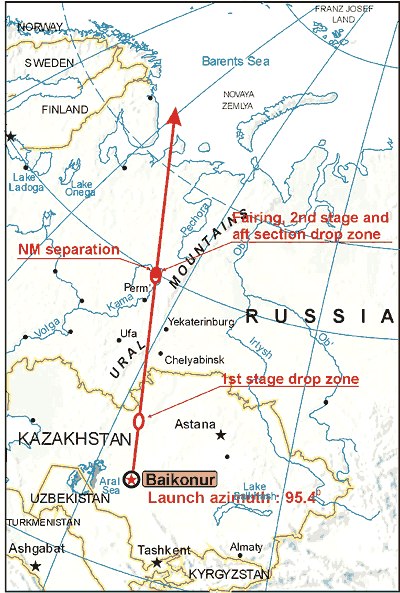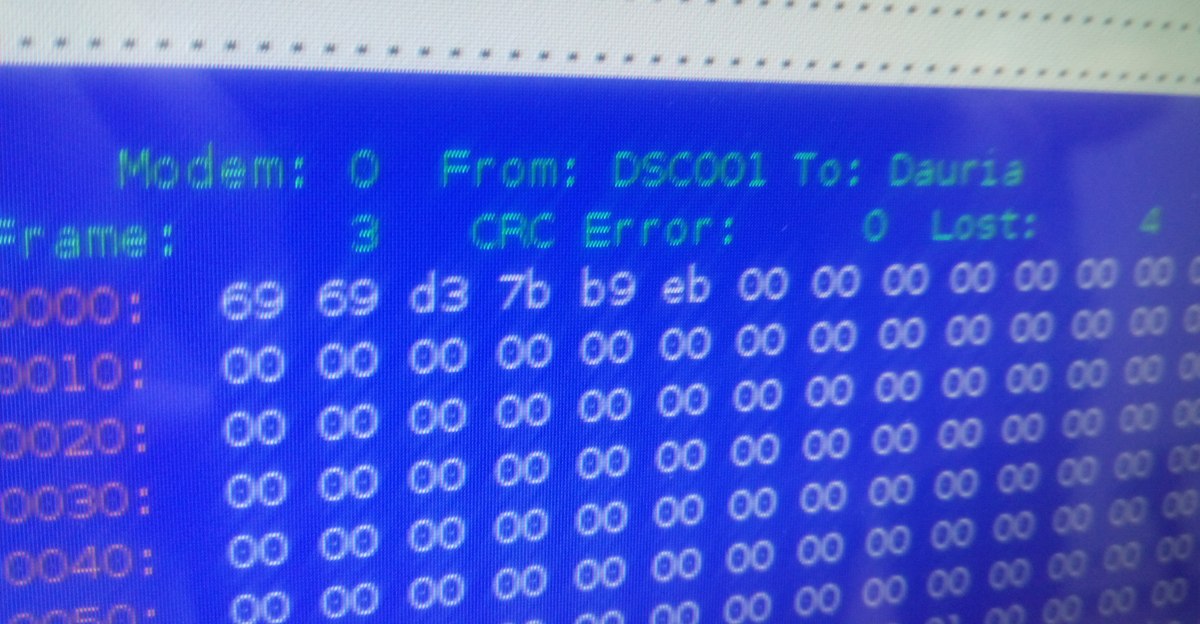Space maps uploaded to tablets: live coverage from Baikonur
The Soyuz 2.1b launch vehicle with the Frigate booster block launched with a group of spacecraft. The main load of the rocket is the two-ton meteorological satellite Meteor-M No. 2. Along the way, six small satellites fly on the same flight, and one of them is our DX1.
On this occasion, today I am writing from Baikonur. Yes, today Zelenyikot is closer to space than ever, and, in many respects, thanks to Habr. So today I’ll tell you how it feels to be next to a take-off rocket, and feel how the apparatus you are involved in is sent to it into space. Of course, my involvement was only in the fact that I told how they create it. Real creators: DX1 project manager Alexander Malinin and lead design engineer Peter Kudryashov are standing next to me, they will help in reporting. The rest of Dauria’s employees are in the Skolkovo office in Moscow, waiting for the first signals that they will catch themselves, and waiting for news from the radio amateurs whom we asked for help.
Here the radio enthusiast R4UAB at 23:10 promises to show the first signal with DX1:
www.ustream.tv/embed/18170139
And here they tell how to see a rocket flying over the Urals, Chelyabinsk, Yekaterinburg, Perm, Ufa, Kazan, Samara, Nizhny Novgorod, Arkhangelsk, Moscow, St. Petersburg:
vk.com/wall-727032_44117

We were sent to Baikonur not just to see the rocket take off. Our task is to prepare a report from the spaceport recorded using Google Glass. Therefore, you will see everything that is happening on the launch pad with my eyes, with the help of a fashion device. Then I will tell about my experience in developing glasses, and attempts to organize a direct connection from Baikonur using satellite communications. It turned out to be more complicated than I expected, but we still try to make a direct connection via LiveStream directly to this page. If it doesn’t work out, we’ll post the videos that were shot at the start.
In addition to the start at 19:58 Moscow time, two more crucial moments await us:
22:31 - separation of the satellite from the upper stage;
23:17 - the first communication session with the device.
The post will be updated as important launch stages take place and information from Moscow arrives. The frequency of updates depends on Internet access. At the observation site of the cosmodrome, only EDGE coverage is promised, in the city itself communication is better.
We express our gratitude to the press service of Roscosmos, OJSC Glavkosmos and employees of the NGO named after S.A. Lavochkina for organizing the report and the video materials provided.
You can read about the Meteor-M No. 2 satellite here: www.federalspace.ru/20746
About DX1 here: habrahabr.ru/company/dauria/blog/228431
About MKA FCI PN2 here:www.sinp.msu.ru/en/post/17428
For other satellites of associated load, here: www.federalspace.ru/20701
Live broadcast from the cosmodrome of the Roskosmos television studio is available here: www.tsenki.com/broadcast ( yeah ... they will not say broadcast ). On the observation deck, too, not everyone is allowed to shoot.
Flew!
Passed overclocking unit. Thank you Samara, then the work of Khimki.
Meteor-M2 successfully separated . So far, so good.
Launch video: from 40 km
And a mile and a half
According to the cyclogram, DX1 separated, but so far the Frigate is out of radio visibility, there is no confirmation. Now we are waiting for the first communication session at 23: 10-23: 17
DRK.XBKCZ!
TURNED ON !!!
We are working! The signal could be received by us (Skolkovo), Berlin, Minsk. The ham radio R4UAB caught a small surge.
DSC001 is our call sign!

On this occasion, today I am writing from Baikonur. Yes, today Zelenyikot is closer to space than ever, and, in many respects, thanks to Habr. So today I’ll tell you how it feels to be next to a take-off rocket, and feel how the apparatus you are involved in is sent to it into space. Of course, my involvement was only in the fact that I told how they create it. Real creators: DX1 project manager Alexander Malinin and lead design engineer Peter Kudryashov are standing next to me, they will help in reporting. The rest of Dauria’s employees are in the Skolkovo office in Moscow, waiting for the first signals that they will catch themselves, and waiting for news from the radio amateurs whom we asked for help.
Here the radio enthusiast R4UAB at 23:10 promises to show the first signal with DX1:
www.ustream.tv/embed/18170139
And here they tell how to see a rocket flying over the Urals, Chelyabinsk, Yekaterinburg, Perm, Ufa, Kazan, Samara, Nizhny Novgorod, Arkhangelsk, Moscow, St. Petersburg:
vk.com/wall-727032_44117

We were sent to Baikonur not just to see the rocket take off. Our task is to prepare a report from the spaceport recorded using Google Glass. Therefore, you will see everything that is happening on the launch pad with my eyes, with the help of a fashion device. Then I will tell about my experience in developing glasses, and attempts to organize a direct connection from Baikonur using satellite communications. It turned out to be more complicated than I expected, but we still try to make a direct connection via LiveStream directly to this page. If it doesn’t work out, we’ll post the videos that were shot at the start.
In addition to the start at 19:58 Moscow time, two more crucial moments await us:
22:31 - separation of the satellite from the upper stage;
23:17 - the first communication session with the device.
The post will be updated as important launch stages take place and information from Moscow arrives. The frequency of updates depends on Internet access. At the observation site of the cosmodrome, only EDGE coverage is promised, in the city itself communication is better.
We express our gratitude to the press service of Roscosmos, OJSC Glavkosmos and employees of the NGO named after S.A. Lavochkina for organizing the report and the video materials provided.
You can read about the Meteor-M No. 2 satellite here: www.federalspace.ru/20746
About DX1 here: habrahabr.ru/company/dauria/blog/228431
About MKA FCI PN2 here:www.sinp.msu.ru/en/post/17428
For other satellites of associated load, here: www.federalspace.ru/20701
Live broadcast from the cosmodrome of the Roskosmos television studio is available here: www.tsenki.com/broadcast ( yeah ... they will not say broadcast ). On the observation deck, too, not everyone is allowed to shoot.
Flew!
Passed overclocking unit. Thank you Samara, then the work of Khimki.
Meteor-M2 successfully separated . So far, so good.
Launch video: from 40 km
And a mile and a half
According to the cyclogram, DX1 separated, but so far the Frigate is out of radio visibility, there is no confirmation. Now we are waiting for the first communication session at 23: 10-23: 17
TURNED ON !!!
We are working! The signal could be received by us (Skolkovo), Berlin, Minsk. The ham radio R4UAB caught a small surge.
DSC001 is our call sign!

